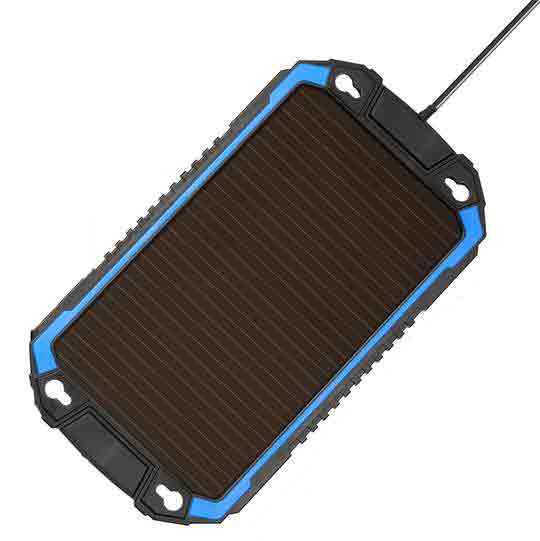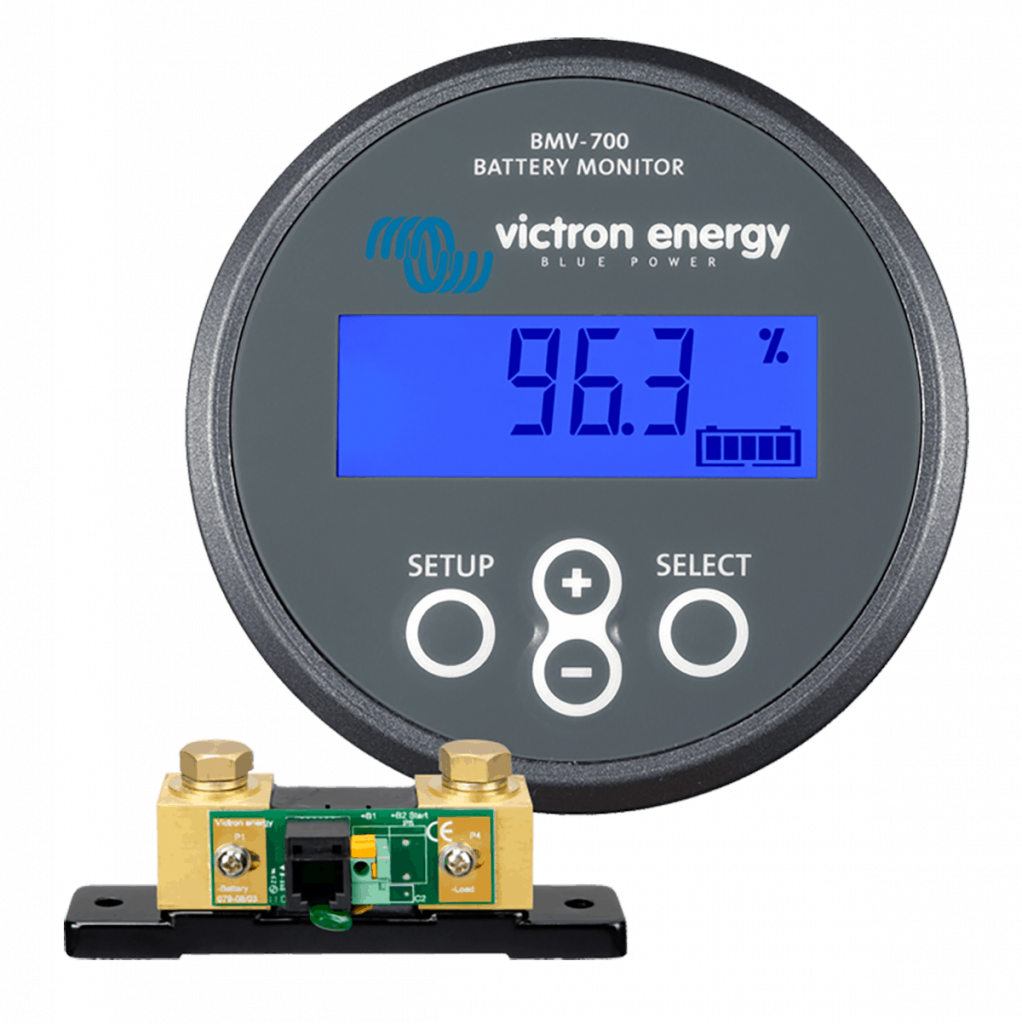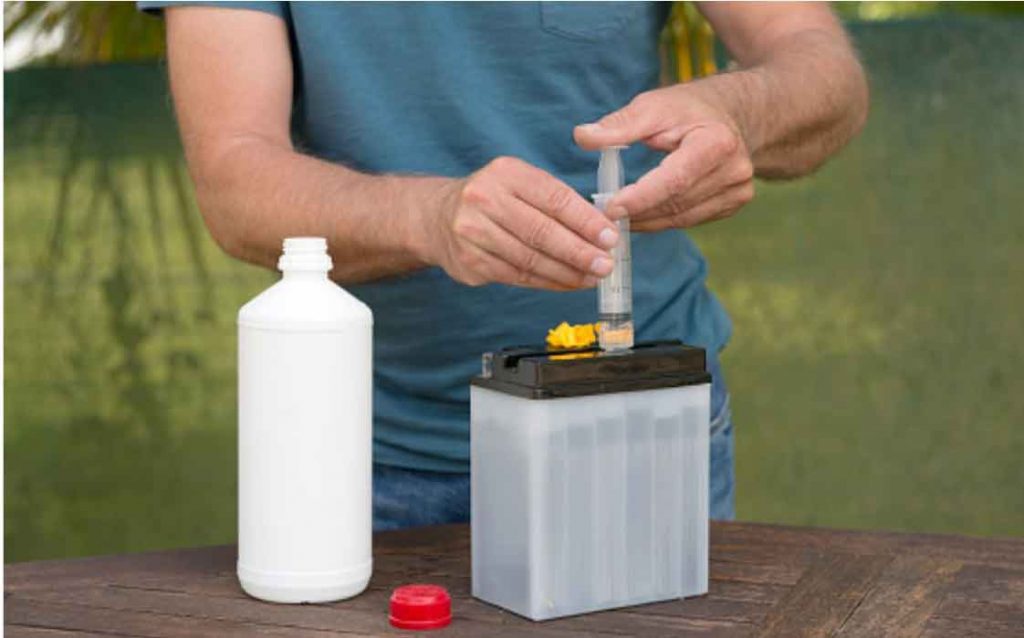Taking care of solar batteries ensures you prolong their life, reduces your costs, and ensures you avoid issues with your system. These problems include your battery draining, overheating, gassing, and even a dead battery.
We have listed some of the devices and methods you can use to protect your battery and have an efficient solar system.
1. Ensure you have a Multimeter
From the time you buy your battery to when you are using it, you always need to make sure it is charged. A multimeter is an instrument used to measure the voltage, resistance, and current in a circuit. You can also use it to check the voltage of your batteries.
Multimeters measure the voltage, resistance, and current of a wiring circuit.
| State of Charge | Voltage |
| 100% | 12.7-13.2 |
| 75% | 12.4 |
| 50% | 12.2 |
| Discharged/Flat | 0-11.8 |
2. Select a Suitable Charger
You not only need to charge you battery when drawing power but also when not using it as well. Once a battery is used you need to ensure that it is charged. You need a 3 stage battery charger bulk, absorption and float. A charger should deliver 10% of the amperage of the battery. For example 10 amps for a 100 amps battery to charge overnight. A battery can take up to 30% of the rated battery amps to charge faster.
A trickle charger is a device you can use to top up your batteries in case your leaving them unused for a long period of time. It will ensure your battery is topped up and does not die rendering it useless.

3. A Charge Controller is a must-have
A charge controller is a must-have accessory in a solar system. It regulates the voltage and current from the solar panel and protects the battery from being overcharged. Controllers usually have three stages of charging; bulk, absorption, and float.
Bulk is where most of the current from the solar panel is used to charge the battery. It then enters the absorption stage where it slows down the amps going in the battery once a certain voltage is reached. At the float stage, the battery is fully charged and is just being topped off to remain full.
4. Temperature Sensor
A temperature sensor is attached on the battery to monitor the batteries temperature. Lead Acid batteries usually heat up when power is being pumped in and a temperature sensor allows the controller to take note of this and adjust the current going to the batteries to avoid overheating. Overheating can damage the batteries and lead to gas hazard from lead acid batteries.
Lithium batteries can also not be discharged in low temperatures and you’ll need to disconnect them in case temperatures fall below 5 degrees.
5. Battery Management System
A battery management system or BMS protects the battery from overcharging, undercharging, and discharging too quickly. Most lithium batteries will come with an inbuilt BMS but if you are assembling lithium battery cells yourself ensure to have one in your system. You also need to ensure that all the terminals of the battery are connected to the BMS.
6. Battery Monitor
A battery monitor is a device that displays information on the battery including voltage, current, and temperature. It will alert you if the battery is fully charged, the draw from the loads on the battery, and if the batteries are heating up.

Modern battery monitors can even relay information over Bluetooth and the internet allowing you to monitor your battery’s performance remotely.
7. Battery Shunt
A battery shunt is a device that creates a low-resistance path for an electric current. This is useful when you have too many wires in a circuit and have a preferred path for the current, especially through a battery monitor. A battery shunt should be connected to the negative side of the circuit. Most battery monitors come with an inbuilt battery shunt.
8. Fusing
You should ensure that you install a fuse between the solar panels and the charge and controller and the battery and the charge controller. This is in case there are spikes in the system your battery is protected.
9. Wiring
Ensure you use the right gauge of wiring in your system. Using large cables reduces resistance and ensures charge flows evenly. Under-sizing wires can pose a great risk to your system. It will lead to a voltage drop in the wires leading to power loss and the wires may heat up creating a fire hazard.
10. Venting
As mentioned before lead acid batteries can heat up when charging and it is important to ensure that there is sufficient ventilation to allow air circulation and cooling down of your batteries. This can also ensure if dangerous gases (in the case of wet lead acid batteries) are produced in the system it does not create a hazard around the bank.
11. Equalization
Equalization is intentionally overcharging Lead Acid batteries to remove sulfate crystals that build up on the plates over time. This should be done routinely (at least once a month). You can set a MPPT controller to apply an equalizing charge to your battery at this interval.
12. Low Voltage cut-out
When using a battery in a solar system and you are drawing out of the battery even if there is input from solar panels if the draw is big enough the loads might deplete the battery. A low voltage cut-out or disconnect will disconnect the battery from the loads (or some of the loads) before the battery is completely discharged.
13. Filling with Water
This only applies to the old type of ‘wet’ flooded lead acid batteries. These batteries require that distilled water i.e the electrolyte be added to ensure that the metal lead surfaces are not exposed. Also, ensure not to overfill as this may cause spillage.

14. Storage
While Lead acid batteries heat up while charging lithium batteries remain unchanged when charging. It will be hard to notice the difference. However, lithium batteries require an operational temperature of 4 degrees Celsius and above.
For lead acid batteries temperature drops are not an issue because it is heating up when charging and so you may need an alternative solution for lithium batteries during winter. You can choose to fix them in an enclosure with an inverter that also heats up or ensure it is sufficiently warmed up during winter times.
